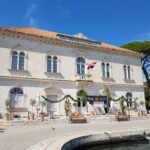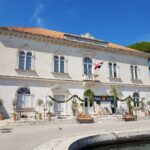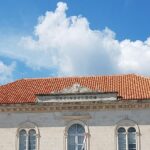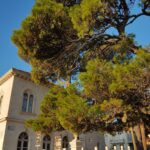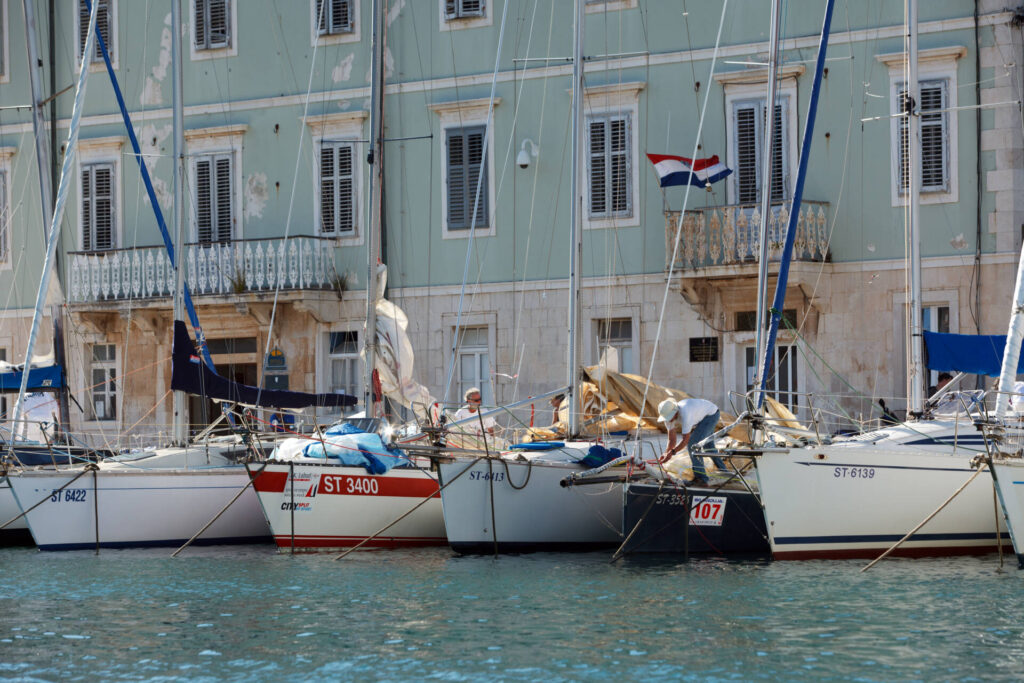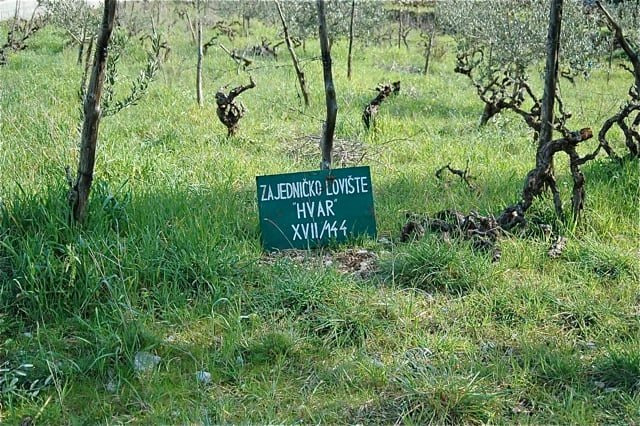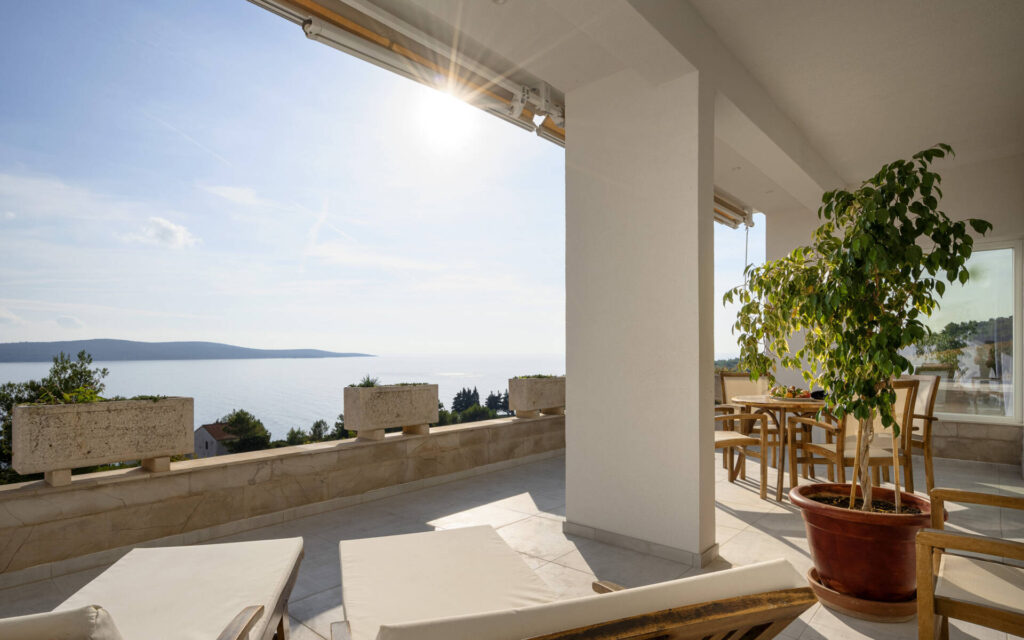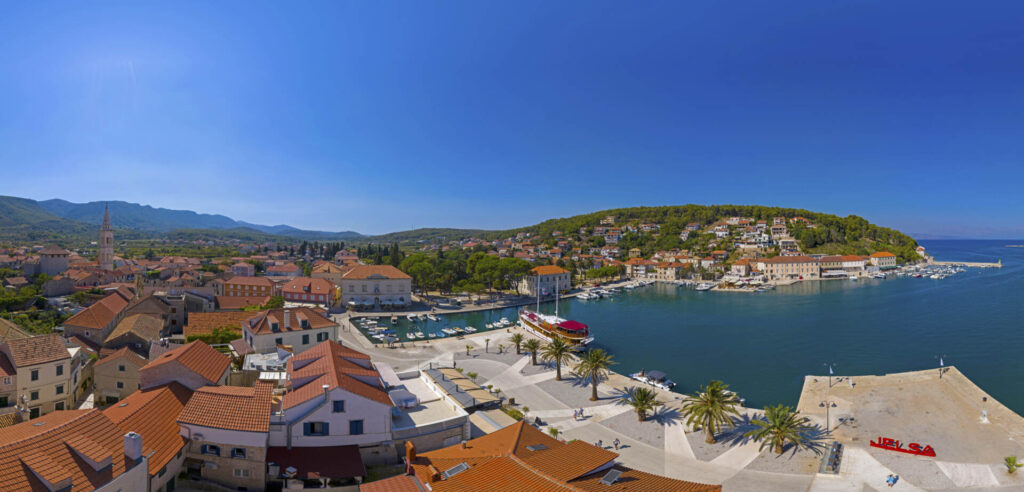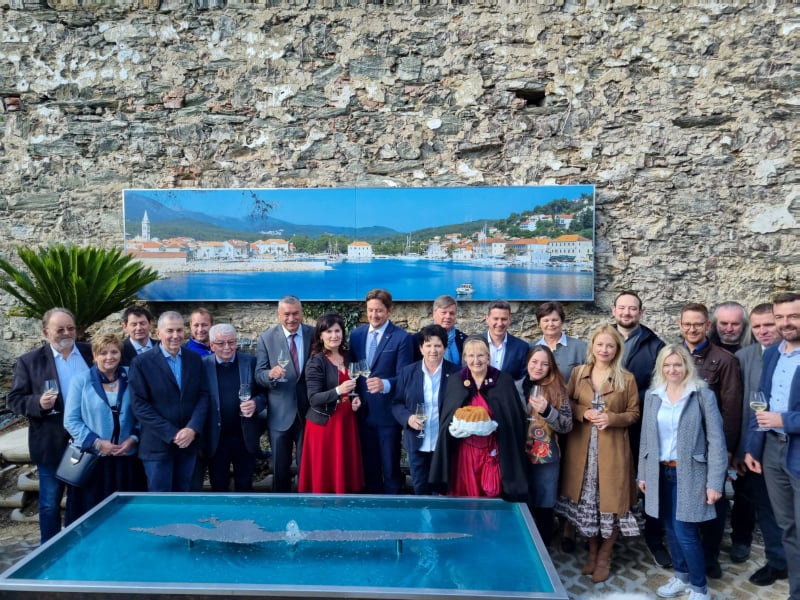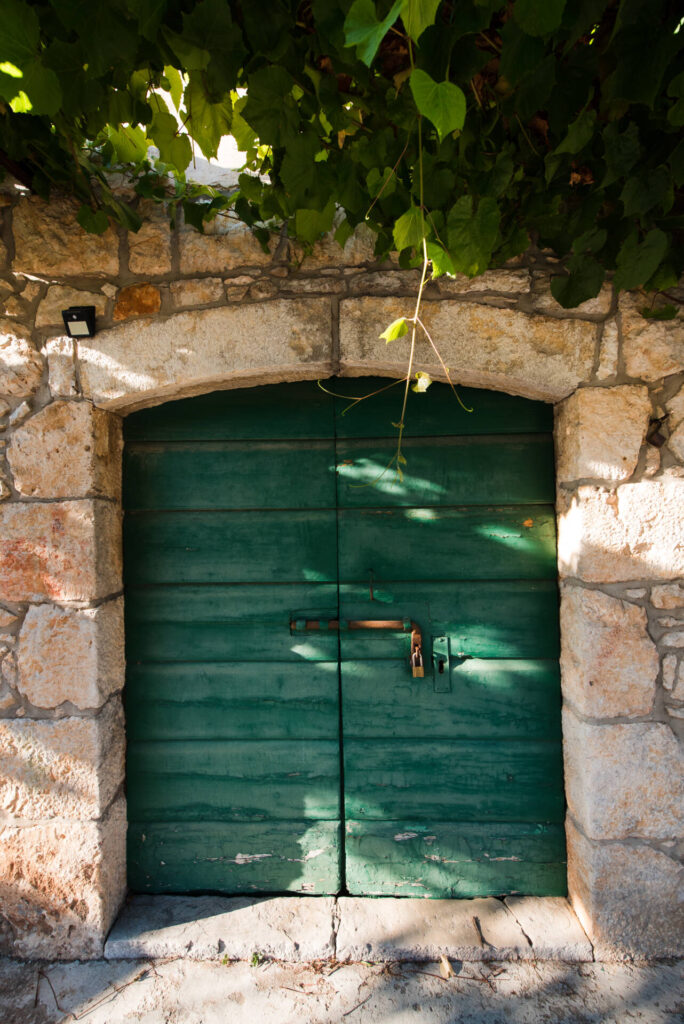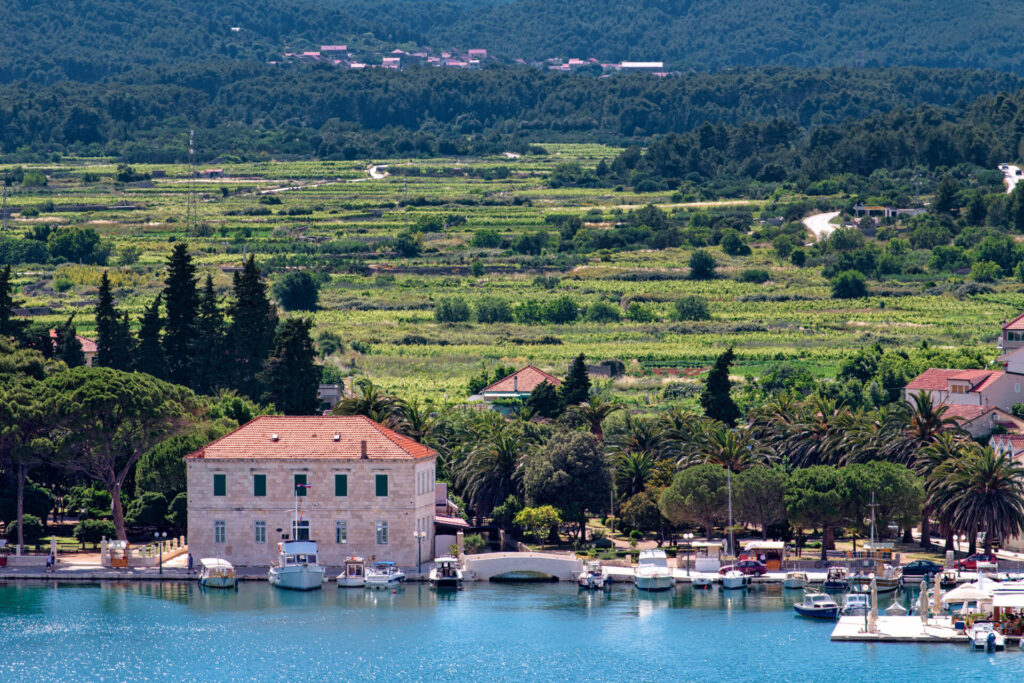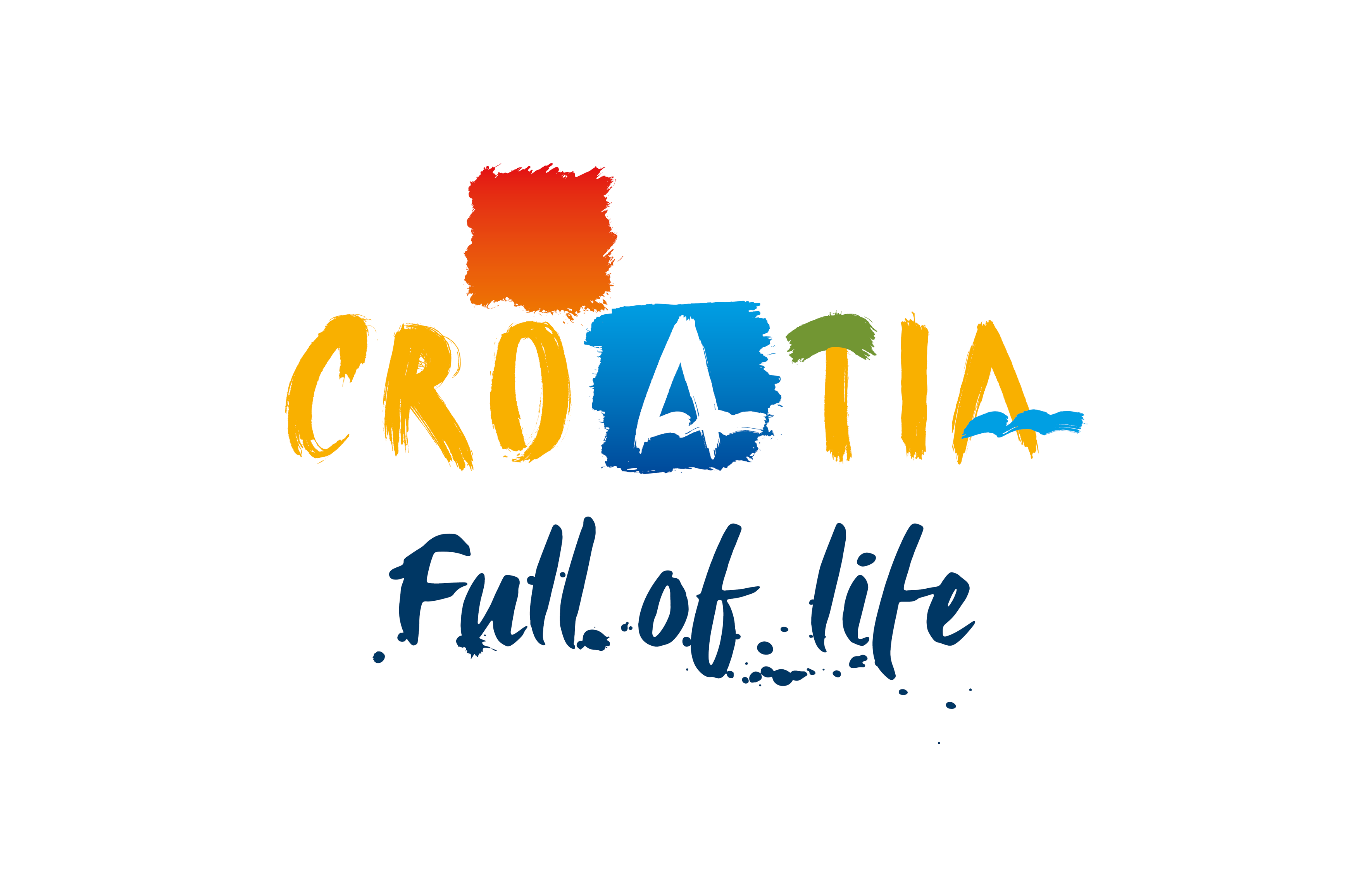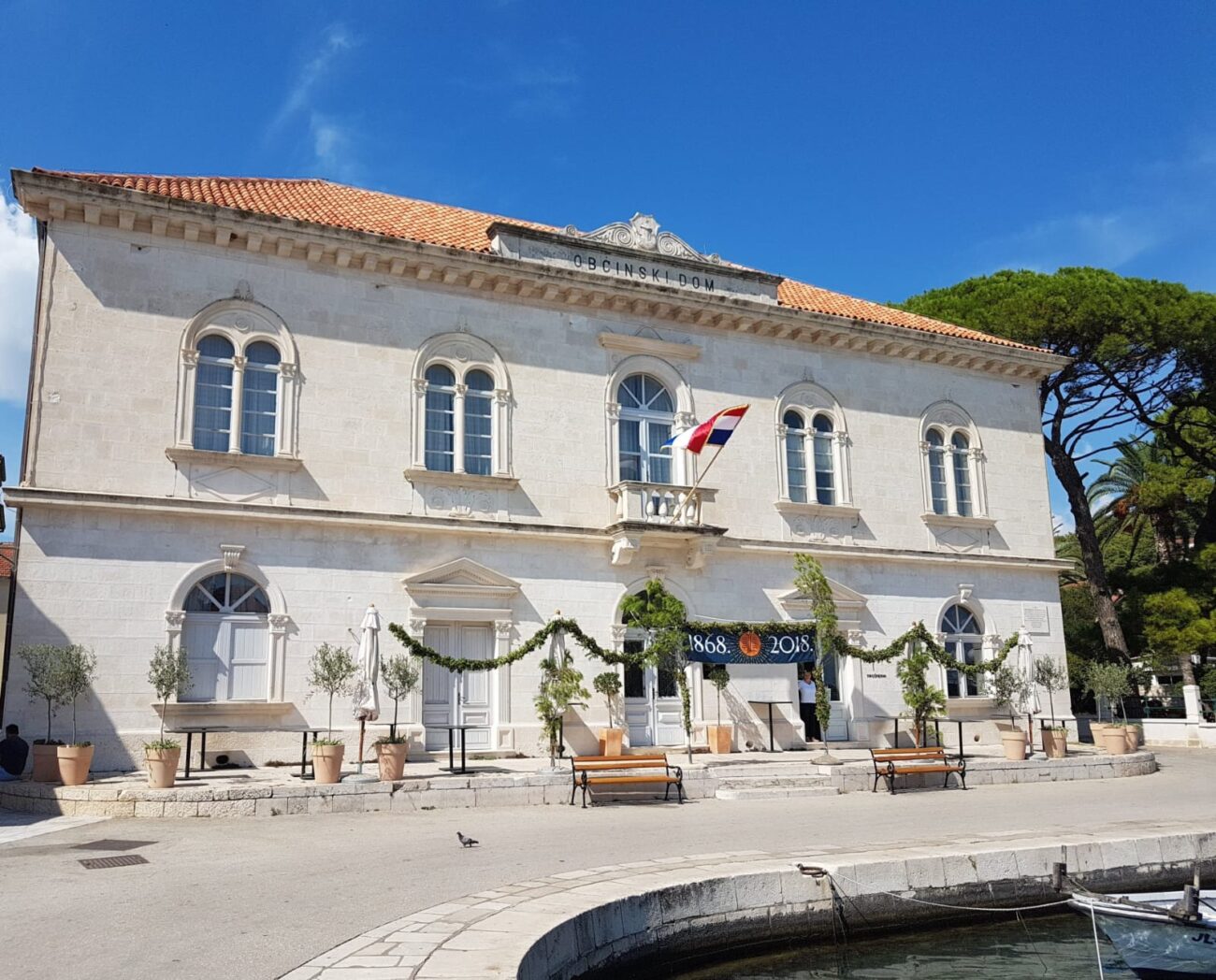
The Town Hall
Jelsa’s Town Hall is the fine imposing building on the town’s waterfront, facing out to the open sea. Dating back to the end of the 19th century, it has an interesting history.
In the 1890s, Jelsa was truly at the peak of its economic and cultural development, thanks to the patriotic and political harmony and maturity which had come to the fore at the time of the Croatian National Revival, a movement which had been gaining ground throughout the 19th century. It was a time when people learned not to waste energy on internal strife and petty quarrels. Under the canny leadership of astute, hardworking populist patriots, Jelsa served as an example, not only to the nationalist movement on Hvar, but for the whole of Dalmatia.
The original Town Hall and Public Reading-Room / Library were situated in a limited space on the Pjaca, and it was high time to create a special building for them, firstly because Jelsa was one of the most advanced local authorities in the country at that time, and secondly because the Jelsa Reading Room was the first and most prominent such facility on the Dalmatian islands. The Town Hall was built on wooden stilts on marshy terrain, like Venice’s buildings, as is recorded in a plaque on its facade. The works started on May 15th 1894, and finished on December 15th 1895. On that date a copy of the Council’s minutes was lodged in the ‘final stone’ of the new construction. The building was Neo-Renaissance in style, and the facade was 25 metres long. The external cladding is of stone from the Island of Vrnik off Korčula Island, while the stone for the internal walls came from Selca on Brač. On the first floor there were four Renaissance biforas.
The festive opening ceremony for the Library’s new premises was held on February 1st 1896, with a simultaneous celebration for the first 25 years of the Library’s existence. The west half of the ground floor was divided into a reading hall and cafe, which was run over many years with matchless skill by Mr. Prošperin Dobronić, who earned long-lasting admiration for his excellent coffee and unswerving charm.
Also on the ground floor was a festive hall cum ballroom for dances and receptions. It had a coffered ceiling, as it has today, with the walls painted in contrasting colours, upholstered chairs and armchairs, and five luxurious chandeliers hung from the ceiling. In 1897 a specially comfortable armchair was bought from Petar Sartori in Gorica for the President. With the approval of the Council Administration, at the end of 1898 Mayor Duboković bought 30 upholstered chairs for the Councillors from Sartori as a gift for the Council.
The new building thus became the centre of Jelsa’s political happenings and the symbol of Jelsa’s individuality.
The major fire which gutted the building in 2003 destroyed the interior with its furniture and fittings almost totally, but, although it took several years, the building was restored to its former glory, with the added benefit of modern installations. The festive hall on the ground floor now serves for gatherings of all kinds, political and cultural (although lavish balls are a thing of the past!). The Council’s main administrative offices are on the first floor, where there is also a congenial conference room. There are further administrative offices on the second floor. (Unfortunately, there is no special access to the building for wheelchairs.)
The front of this imposing building looks out on to Jelsa Harbour and across to the mainland. At the back of the building there is a large terrace at first floor level, overlooking the ‘Fountain Square’ (properly called ‘Trg Tome Gamulina’), which is the scene of outdoor receptions on occasions like Jelsa’s Feast Day on August 15th. So once again Jelsa’s Town Hall is serving its purpose as a political and social centre for the local community, just as it was planned to do over one hundred years ago.
Link for the Jelsa Council website (in Croatian): http://www.jelsa.hr




